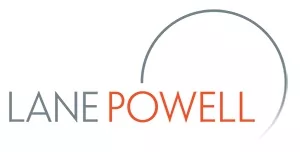The U.S. Department of Housing and Urban Development (HUD) has adopted five new safe harbors for those in the design and construction industry. This is the first update of the safe harbors in 15 years and brings welcome relief for design and construction professionals confronting conflicting compliance requirements.
Background
The Fair Housing Act (FHA) applies to the design and construction of all new multifamily housing consisting of four or more dwelling units. Often, those in the design and construction industry assume that compliance with the local code will result in compliance with the FHA. This is not the case. Due to conflicts between local codes, new standards and FHA requirements, HUD has previously recognized 10 safe harbors that apply to the design and construction of multifamily housing. Unfortunately for the construction industry, these safe harbors often lag behind new codes and standards. This has created conflicts between applicable code and FHA requirements, resulting in confusion in the design industry. Typically, where there is a conflict between an FHA requirement and applicable code, the most stringent requirement is required. Sometimes, however, there is simply a conflict — with neither requirement being more stringent than the other.
In order to provide guidance to the design and construction industry, HUD established safe harbors. Once chosen, the safe harbor must be applied by the entire design and construction team in order to establish that the housing project complies with FHA requirements. While the HUD safe harbors have remained stagnant since 2005, building codes are often updated every three years. With each new update, new conflicts between FHA and the building code are created. As new codes are released, they are adopted in a patchwork manner throughout the U.S. — creating further conflict between jurisdictions and the FHA. These conflicts are often not understood by the construction industry until after buildings under new codes are constructed. This has resulted in costly removal and remediation of the non-FHA compliant construction. The construction industry for years has been lobbying HUD to act more quickly to adopt new international building standards as safe harbors to remove the conflicts created when code updates are adopted.
New Safe Harbors
HUD's December 8 adoption of new safe harbors makes up for the lack of action over the past 15 years. Effective March 8, 2021 (90 days from publication), the following standards will be considered safe harbors under the FHA in addition to the 10 currently existing safe harbors:
- 2009 edition of the International Code Council (ICC) Accessible and Usable Buildings and Facilities (ICC A117.1-2009) standard. This standard is a technical standard for the design of facilities that are accessible to persons with disabilities.
- The 2009, 2012, 2015 and 2018 editions of the International Building Code (IBC).
This means that following the requirements of the chosen safe harbor by the entire design and construction team will result in an FHA compliance project. Do note that the new HUD guidelines point out an important fact about the IBC. The IBC is a model building code and is not law. It has been adopted by various states and cities, but some jurisdictions modify the IBC. To the extent your local jurisdiction has modified the IBC as it relates to accessibility on multifamily projects, the safe harbor applied for FHA compliance is not the local code, but the model version of the IBC.
Finally, in order to stay current with new versions of codes in the future, HUD also changed its own rulemaking requirements on how and when it can adopt new safe harbors. Now, HUD may propose a new safe harbor by Federal Register notice with a 30-day public comment period. This will provide for more flexibility in the future to quickly adopt updated standards and prevent conflicts between the FHA requirements and code, which will in turn prevent claims. You can find the entire rule and comments here.
The content of this article is intended to provide a general guide to the subject matter. Specialist advice should be sought about your specific circumstances.

